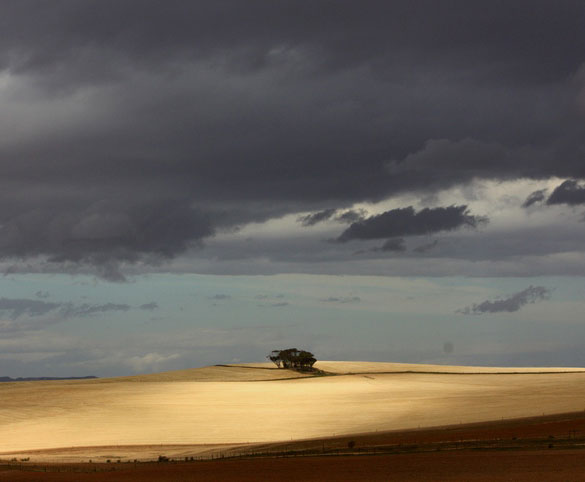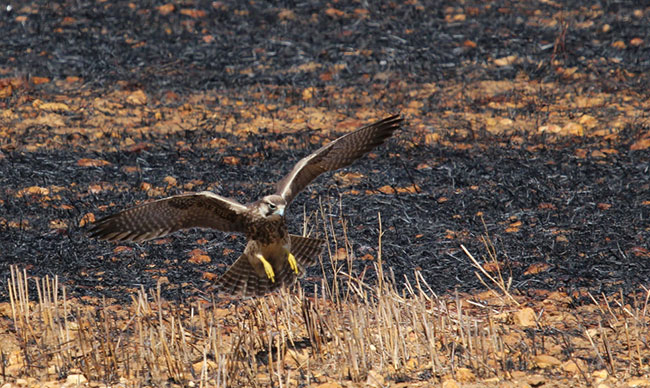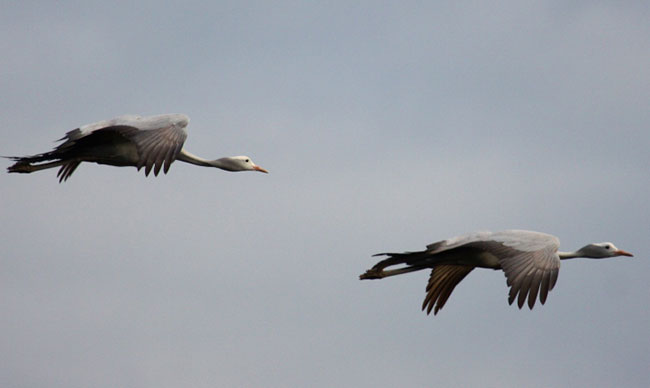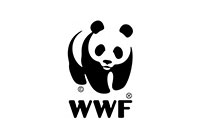The Overberg Wheat-belt is not only a major agricultural district. It’s also home to:
- Clusters of remaining Renosterveld
- And a number threatened bird species.
Now, a new ORCT project funded by WWF is working to address threats to both. The project will especially focus on the five priority bird species found in the Wheat-belt – and the Renosterveld habitat they depend on.
The Overberg Wheat-belt stretches from Botrivier to close to Heidelberg – including the towns of Caledon, Bredasdorp and Swellendam. Many patches between the crop fields and pastures here are remaining Renosterveld patches, koppies and ‘kloofs’.
BirdLife South Africa has identified the Overberg Wheat-belt as an Important Bird Area. Hundreds of bird species roost, breed and forage in the Renosterveld (and Fynbos) here.
That’s why, healthy well-managed remnants and corridors of natural veld will provide the landscape that many of these birds need to survive.
For farmers:
The ORCT also takes an integrated approach to conservation on private land. That means natural veld remnants and commercial farm lands are both seen as vital, and we support a joint approach to managing both. In this way, the project also helps to protect bird species that make use of productive lands, like the Blue Crane and Karoo Korhaan.
Through this new partnership, the ORCT will focus on:
- Growing the number of signed conservation easements.
- Providing support to those farmers who have already signed easements. This support includes alien clearing, ecological burns, erosion control, livestock management and more.
- And protecting and monitoring threatened bird species in the Wheat-belt.
The five species that have been targeted for conservation action are:
- The Black Harrier: An Endangered species with fewer than 2000 individual birds remaining today. The Black Harrier breeds and forages in Renosterveld. We’ll be teaming up with the FitzPatrick Institute’s Black Harrier Project and the Overberg Crane Group to monitor and protect this species.
- The Southern Black Korhaan: The numbers of Southern Black Korhaan have declined dramatically in the Wheat-belt – and it was recently listed as Endangered. We’ll work closely with the Nuwejaars Wetlands Special Management Area’s Southern Black Korhaan Project, the Overberg Crane Group and Birdlife South Africa.
- Denham’s Bustard: It depends on natural remnants for breeding, but also forages in transformed grainlands. This shows the importance of managing both well. Here we work with the Overberg Crane Group (OCG) and the Endangered Wildlife Trust (the organisation responsible for addressing poisonings and collisions).
- Blue Crane: The Blue Crane makes use of productive lands, which is why the Wheat-belt is such a stronghold for this species. Still, the Blue Crane is listed as Vulnerable. We work with the Endangered Wildlife Trust and the OCG to protect this species.
- And the Secretarybird: This species is also less dependent on natural remnants. But it is also listed as Vulnerable. We work with the Endangered Wildlife Trust and the OCG here.
Our thanks to WWF South Africa for supporting this important work – and for being a major partner to the ORCT.





